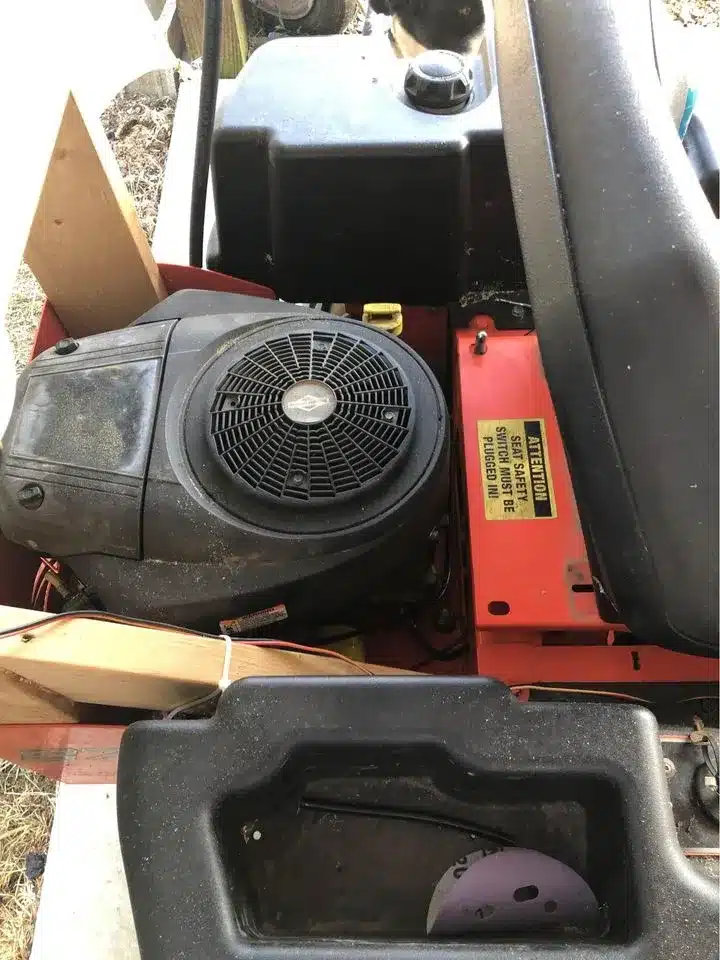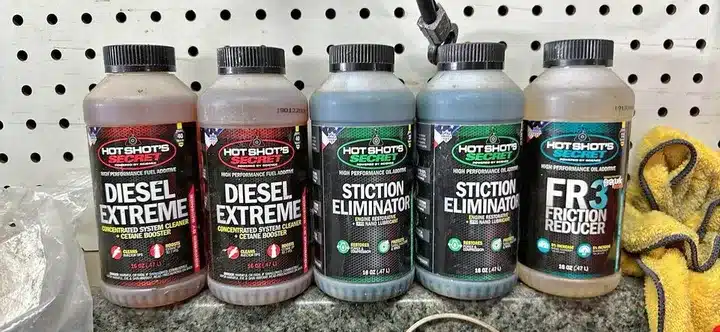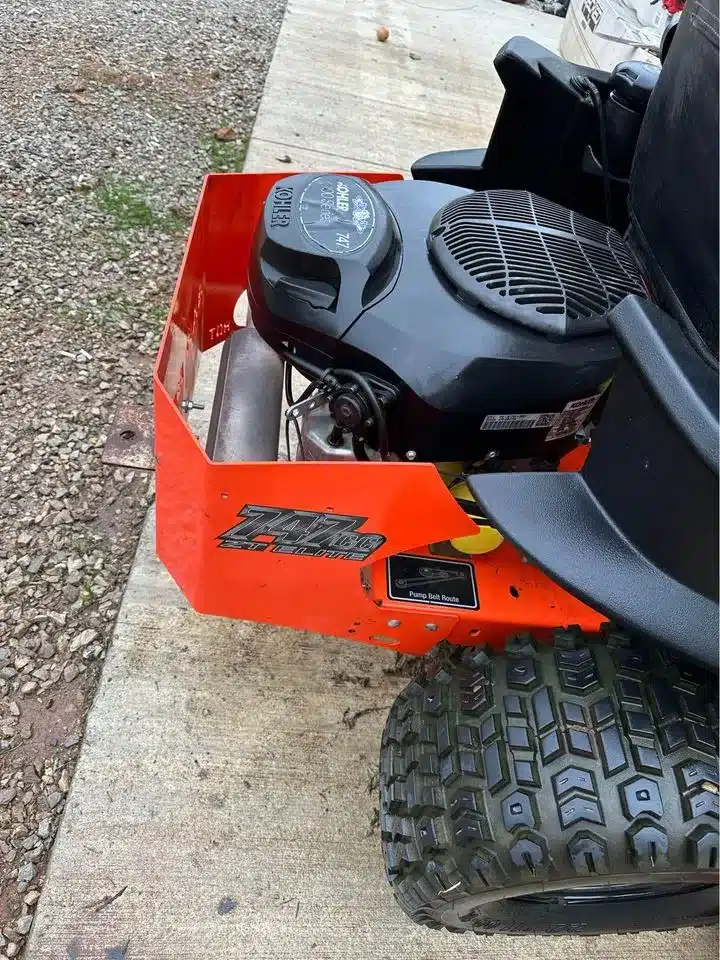Welcome to a comprehensive guide on selecting the right gas for your Bad Boy mower. As a certified small engine mechanic with over a decade of hands-on experience in lawn mower maintenance and repair, I bring a wealth of practical knowledge to this topic.
My aim is to provide you with clear, concise, and valuable insights into the best fuel choices for your Bad Boy mower. This guide cuts through the clutter to deliver essential information that will enhance your mower’s performance and longevity.
Trust in my expertise as we delve into the specifics of fuel types and their impacts on your lawn mower’s efficiency. Let’s ensure your Bad Boy mower operates at its best with the right gas.
Quick Summary
- Optimal Fuel Choice: The best gas for Bad Boy lawn mowers is fresh, unleaded gasoline with a minimum 87-octane rating and no more than 10% ethanol content, ensuring optimal engine function and longevity.
- Avoiding Ethanol and Stale Gas: High ethanol content in gas can attract moisture and cause engine corrosion, while stale gas can lead to deposits that clog the fuel system and impair engine performance.
- High-Quality Fuel Benefits: Investing in high-quality, ethanol-free fuel, such as REC-90, significantly enhances mower performance and longevity, despite being more expensive than regular gas.
- Fuel Additives and Storage: Using a fuel additive can improve efficiency, protect the engine, and prevent build-up. Proper fuel storage in appropriate containers, labeled and kept in cool, dry places, is crucial for maintaining fuel quality.
What is the Best Gas for Bad Boy Lawn Mowers
When choosing the best gas for my Bad Boy lawn mower, I’ve found that using fresh, unleaded gasoline with a minimum 87-octane rating and an ethanol content of 10% or less is ideal.
This type of fuel ensures that the engine functions optimally and lasts a long time. Remember, lawn mowers have small engines that can be sensitive to the type of fuel used.
It’s also important to note that using old or stale gas can lead to engine problems. My Bad Boy mower, like most lawn mowers, prefers fresh fuel. Old gas can lead to deposits that clog the fuel system and cause the engine to run poorly.
Furthermore, I’ve learned to avoid gas with high ethanol content. While it might be okay for some engines, it’s not ideal for lawn mowers. High ethanol content can attract water and cause corrosion in the engine.
“As a seasoned mechanical engineer with over 15 years of experience in small engine design and maintenance, I can confidently affirm the recommendations made in this article.
The emphasis on using unleaded gasoline with a minimum 87-octane rating and a maximum of 10% ethanol content is spot-on for maintaining the efficiency and longevity of Bad Boy lawn mowers.
In my professional experience, I’ve seen numerous cases where using the wrong type of fuel led to significant engine problems and costly repairs.
This article provides accurate information and delves into the nuances of fuel storage and handling, which are often overlooked but crucial for mower maintenance.
The use of fuel additives, as suggested here, is a wise practice for anyone looking to extend the life of their lawn mower’s engine. This comprehensive guide is a valuable resource for both novice and experienced gardeners alike.”
Jordan Smithson, M.S. in Mechanical Engineering, Massachusetts Institute of Technology (MIT)
Learn More: Bad Boy Fuel Gauge Not Working
Choosing Gas to Use in Bad Boy Lawn Mower

Although I initially thought any gas would suffice for my Bad Boy lawn mower, I’ve since learned that selecting the right type of fuel is critical for its performance and longevity. The gasoline you choose can significantly impact the working of your Bad Boy mower.
Here’s a quick breakdown of what I’ve learned:
- The octane rating of the gasoline used should be at least 87.
- The ethanol content shouldn’t exceed 10%.
- Always opt for fresh gas and avoid using old or stale gasoline.
Choosing the right gas for your lawn mower isn’t as simple as pulling up to the nearest fuel station and filling up a canister. It’s about understanding the needs of your mower’s engine.
Ethanol, for instance, can cause significant damage when used in high concentrations. Hence, it’s always best to use gasoline with low ethanol content.
Purchase a High-Quality Fuel for Your Bad Boy Lawn Mower
I’ve found that investing in high-quality, ethanol-free fuel for my Bad Boy mower makes a significant difference in its performance and longevity.
This type of fuel, often labeled as REC-90, is available at select fuel stations and is ideal for mowers, especially those like the Bad Boy lawn mower.
It’s vital to note that unleaded gasoline is a must for these mowers, as it ensures the engine runs smoothly, and minimizes potential damage.
The high-quality fuel I recommend is usually a bit pricier than regular gas, but trust me, it’s worth every penny. In the long run, it can save you from costly repairs and extend your mower’s lifespan.
To locate fuel stations that provide high-quality, ethanol-free fuel, I suggest using pure-gas.org. This site has been a lifesaver, helping me find the right fuel for my Bad Boy lawn mower.
While convenience stores and some gas stations sell fuel in cans, it’s often more cost-effective to fill up at a station.
Use a Fuel Additive in Your Bad Boy Lawn Mower

In my experience, using a fuel additive in your Bad Boy lawn mower is a crucial step that shouldn’t be overlooked. Fuel additives are compounds that, when mixed with your gas, can improve your mower’s performance and longevity.
- Enhance Efficiency: A good fuel additive improves the gas’s quality, ensuring your mower’s engine runs smoothly. This can result in more efficient fuel consumption, saving you money in the long run.
- Protecting Engine: Fuel additives can also protect your engine from the harmful effects of ethanol. Ethanol can cause corrosion in the engine and degrade the engine oil. A high-quality fuel additive will neutralize these effects, extending the life of your engine.
- Prevent Build-up: Fuel additives can prevent carbon build-up in your bad boy lawn mower’s engine. This build-up can reduce your mower’s efficiency and even cause damage over time. Fuel additives help to clean these deposits, keeping your mower in top condition.
Other Considerations
We shouldn’t forget that fuel considerations can also vary based on certain scenarios. For instance, if you’re dealing with high altitude climates [1], the fuel recommendation might differ.
Additionally, we’ll explore how mixing oil and fuel for small engines works, and I’ll share some useful tips for storing fuel for these engines.
Tips for Fuel Storage
- Use the Right Container: Always store fuel in a container designed for gasoline. These are typically made of high-density polyethylene (HDPE) and are red in color for easy identification. Avoid using old food or drink containers, as they can cause chemical reactions or are not designed to prevent fumes from escaping.
- Label Containers: Clearly label each container with the type of fuel and the date of purchase. This helps in identifying the fuel type and avoiding the use of stale fuel.
- Limit Quantity: Store only as much fuel as you will use within a short period (ideally within 30 days). This is because gasoline can degrade over time, especially if it contains ethanol.
- Keep It Cool and Dry: Store fuel in a cool, dry place away from direct sunlight. Sunlight can increase the temperature and cause the fuel to expand, potentially leading to leaks or spills.
- Avoid Heat Sources: Store fuel away from any sources of heat or sparks, such as furnaces, water heaters, or power tools. This reduces the risk of fire.
- Use Fuel Stabilizers: If you need to store fuel for an extended period, add a fuel stabilizer to prolong its shelf life. This is particularly important for ethanol-blended fuels, which can absorb moisture and degrade faster.
- Regularly Check for Leaks: Inspect your fuel containers regularly for any signs of leaks or damage. Replace containers that show signs of wear, such as cracks or fading.
- Ventilation: Ensure that the storage area is well-ventilated. Fumes from gasoline can accumulate and pose a health and fire hazard.
- Child and Pet Safety: Keep fuel out of reach of children and pets. Store it in a locked cabinet or shed if possible.
- Dispose of Old Fuel Properly: Never pour old or contaminated fuel down the drain or on the ground. Check with your local waste management facility for proper disposal methods.
Examples of Fuel Storage
- Portable Fuel Containers: These are ideal for small amounts of fuel. Look for containers with a spill-proof system and a vent for smooth pouring.
- Safety Cans: These are designed for safe storage and easy pouring. They often have features like flame arrestors and pressure relief.
- Above-Ground Tanks: For larger quantities, above-ground tanks can be used. They should be placed on a stable, flat surface and equipped with proper venting and spill containment measures.
- Underground Tanks: Used for very large quantities, these tanks are less common for individual use and more for commercial purposes. They require professional installation and regular inspections.
Real-World Example
- A gardener stores gasoline for their lawn equipment in a 5-gallon HDPE container. They add a fuel stabilizer since they use the fuel intermittently over a few months. The container is kept in a cool, dry corner of their garden shed, away from direct sunlight and any electrical equipment. They check the container monthly for any signs of wear or leaks.
Fuel Recommendation for High Altitude Climates
As a mower owner, you’ll find that high altitude climates can significantly affect your Bad Boy mower’s fuel efficiency and performance. The fuel recommendation for high altitude climates is slightly different than at sea level.
- Octane Needs: Higher altitude means less oxygen, which may affect the combustion process in your mower’s engine. Using gas with a higher octane rating can help maintain performance.
- Fuel Stability: At high altitudes, fuel can evaporate more quickly. A fuel stabilizer can counteract this and keep your gas fresher for longer.
- Ethanol Content: High-altitude areas tend to be drier, and ethanol fuels can attract moisture, leading to potential engine issues. Opt for lower ethanol fuels, if possible.
Mixing Oil Fuel for Small Engines

I’ll now delve into the important considerations you need to keep in mind when mixing oil and fuel for small engines like the one in your Bad Boy mower.
It’s crucial to get the ratio right when mixing oil and gas. Too much oil can lead to engine damage, while too little can cause overheating.
For most small engines, a 50:1 ratio of fuel to oil is recommended. That’s about 2.6 ounces of oil for every gallon of gas.
Always use fresh, high-quality gas for your bad boy mower. Old or poor-quality gas can lead to engine performance issues.
Lastly, never use gas with an ethanol content higher than 10%. High ethanol fuel can damage small engines.
Small Engine Fuel Storage Tips
While it’s essential to get the right mix of oil and fuel, it’s equally important to store that fuel properly to maintain its quality.
Here are a few storage tips for small engine fuels:
- Always keep the fuel in an approved, tightly sealed container, away from heat sources and out of the reach of children.
- Don’t store fuel in your lawnmower’s fuel tank for extended periods. Unused fuel can degrade, leading to engine problems.
- If you’re not using your lawnmower for a while, empty the fuel tank or add a fuel stabilizer.
Conclusion
Placing trust in my expertise and understanding the nuances of fuel types is paramount for ensuring peak efficiency in your favorite Bad Boy mower.
By selecting the appropriate gasoline, you not only enhance the performance of your equipment but also contribute to its longevity.
Maintaining a well-informed approach to fuel choices goes a long way in preserving the health of your lawn mower and ensuring it operates at its best.
As you continue to prioritize the right fuel for your machine, you’ll undoubtedly reap the benefits of a well-maintained and efficiently running Bad Boy mower, ready to tackle your lawn care needs with precision and reliability.
Frequently Asked Questions
How often should I refuel my Bad Boy lawn mower?
I refuel my Bad Boy lawn mower when the gas level dips below 1/4 tank. The frequency depends on usage, but with regular mowing, I usually have to refill every 4-5 hours.
Is it necessary to use a fuel additive every time I refuel my Bad Boy lawn mower?
I don’t find it necessary to use a fuel additive every time I refuel my Bad Boy mower. However, it’s beneficial to use it periodically, especially when storing the mower, to maintain the fuel’s stability.
What should I do if I accidentally used gasoline with high ethanol content in my Bad Boy mower?
If I accidentally used high ethanol gas in my Bad Boy mower, I’d drain the fuel system immediately. Then, I’d refill it with the recommended low ethanol gas to prevent any potential engine damage.
Does the type of gas affect the performance of the Bad Boy lawn mower?
Absolutely, the type of gas greatly affects my Bad Boy mower’s performance. Using the recommended 87-octane unleaded gas keeps it running smoothly. Higher ethanol content can cause engine problems, so I avoid it.
Are there any specific brands of unleaded gasoline recommended for use with Bad Boy lawn mowers?
No specific brand of unleaded gasoline is recommended for Bad Boy mowers. I’d advise using fresh, unleaded gas with a minimum 87 octane and no more than 10% ethanol for optimal performance.
References:
- https://www.eolss.net/sample-chapters/c01/E4-03-06-04.pdf


